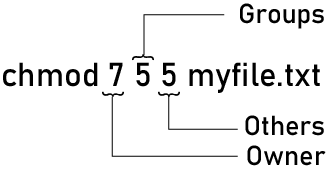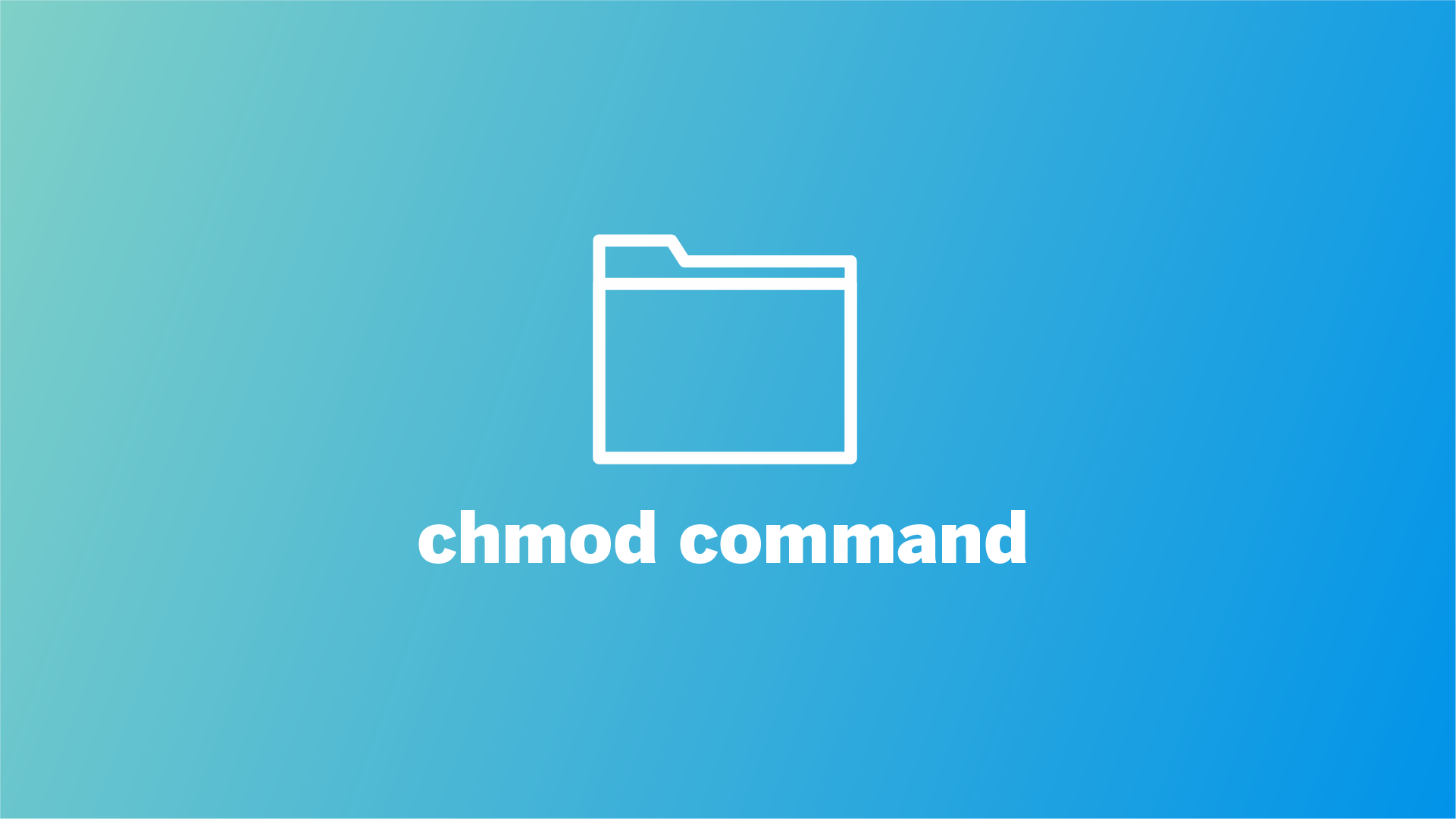File permission in Linux is a set of rules that provide access to files and directories to a specific user group. The permission ensures that the files and directories are only accessible to authorized users and protects sensitive information from unauthorized access.
chmod command in Linux is used to change the file permission. chmod command supports both numeric and symbolic notation to manage permissions in Linux. chmod command manages permission for owner, group, and user separately.
In this blog post, we will learn how to manage file permission with chmod command in Linux.
Table of Contents
Understanding File Permission in Linux
There are three types of permission in Linux, read, write, and execute. And each permission has a distinct definition
| Permission | Symbol | Description |
|---|---|---|
| Read | r | Allows users to read, view, and download the files. |
| Write | w | Allows users to write content, create, change, append, or delete files. |
| Execute | x | Allows users to execute the files, open an application, or run a script. |
| No permission | - | Restrict users from reading, writing, or executing files or directories. |
Basic Syntax of the chmod Command
The basic syntax of the chmod command is
chmod [OPTION] MODE[,MODE] FILEOPTIONis a set of flags used to modify the behavior of the chmod command.MODEThe permission mode you want to assignFILEThe files that you want to change the permission
Here is a reference table of useful chmod command option
| Option | Description |
|---|---|
-v | Provides details information on what is happening behind chmod |
-c | This option is alike verbose but provides details only when the change is made |
-R | change the permission of a directory and its entire content. |
--help | Provide a short description of each supported option |
Note: This is not a complete list. You can find the complete option with man chmod command.
Change File Permission With Symbolic Notation
Symbolic notation represents file permission using characters and symbols. Symbolic notation provides easy to understand representation than numeric notation.
Symbolic file permission consists of four characters. Each character represents permission to the owner, group, others, and all respectively. Here is a reference table to represent the owner, group, and user in numeric notation.
| User | Symbol |
|---|---|
| Owner | u |
| Groups | g |
| Others | o |
| All user | a |
There are several symbols used in symbolic notation to manage file permissions. Each symbol represents a different operation. Here is a reference symbol table with a short description of their operation.
| Symbol | Description |
|---|---|
+ | Add permission to specified user. |
- | Remove permission from specified users. |
= | Sets the specified permissions, replacing any existing permissions. |
Assigning Symbolic Permissions with chmod Command
You can use chmod command to assign file permission using symbolic notation. Assigning and modifying file permissions using symbolic notation is intuitive and easier to use than numeric notation. The basic syntax of chmod command with symbolic notation
chmod user+permission fileuser: User presents to whom permission would apply. It may be the owner (u), group (g), or others (o).permission: The mode of permission to apply. It can be read (r), write (w), execute(x), or multiple permission (rwx)+: Add permission to specified user. It also can be remove permission (-) or set specific permission (=)file: The file you want to set or modify permission
Examples of Changing File Permission With Symbolic Notation
Example 1: To set read, write, and execute permission to owner and read permission to group and others.
chmod u+rwx,go+r myfile.txtYou can use ls -l command to see the permission for files and directories.

Example 2: Suppose you want to modify the permission, remove execute permission from the owner, and add write permission to the group while keeping other user permission unchanged.
chmod u-x,g+w myfile.txt
Example 3: If the file contains sensitive information, you may want to restrict access for groups and others. In this case, you can remove the permission from them.
chmod og-rw myfile.txt
Example 4: Now you have changed your mind and want to change to only read permission to all users, including owners, groups, and others.
chmod a=r myfile.txt
Example 5: Suppose you have a folder with multiple files inside the folder. Now you want to change the permission to the folder and its content. In this case, if you change permission to the folder as in previous examples. You will only change permission to the folder, while files inside the folder will be unaffected.
To change the permission of a directory and its content, you need to use -R the recursive option along with symbolic or numeric notation.
chmod -R a=w folder
Change File Permission With Numeric Notation
chmod command supports numeric notation to change file permission. chmod command takes three numeric digits to change the permission. where
- 1st digit represents permission to the owner,
- 2nd digit represents permission to groups and
- 3rd digit represents permission to others.

Numeric number 0 to 7 is used to modify the file permission, where each numeric number represent a specific permission. Here is a reference table of each numeric number and associated permission mode
| Permission Value | Binary ( rwx) | Permission Description |
|---|---|---|
| 0 | 000 | No permissions |
| 1 | 001 | Execute permission only |
| 2 | 010 | Write permission only |
| 3 | 011 | Write and execute permissions |
| 4 | 100 | Read permission only |
| 5 | 101 | Read and execute permissions |
| 6 | 110 | Read and write permissions |
| 7 | 111 | Read, write, and execute permissions |
For example, here is a chmod example that sets permission to 775 to file
chmod 775 fileAs you guess, this numeric notation 775 sets permission to read, write, and execute permission to the owner. It also sets read and execute permission to groups and other users.
Examples of Changing File Permission With Numeric Notation
Example 1: To set read, write, and execute permission to owner and read permission to group and others, you have to use numeric notation 744.
chmod 744 myfile.txt7: Represent read, write and execute permission of the owner4: Represent read-only permission to group and user

Example 2: Suppose you want to modify the permission, remove execute permission from the owner, and add write permission to the group while keeping others’ user permission unchanged. In this case, you have to use the numeric notation 666.
chmod 666 myfile.txt6: Represent read and write permission to owner, group, and users.

Example 3: If the file contains sensitive information, you may want to restrict access for groups and others. In this case, you can remove the permission from them. In this case, you have to use the chmod 600.
chmod 600 myfile.txt6: Represent read and write permission to the owner.0: Represent no permission to groups and users.

Example 4: Like symbolic notation, if you want to change permission to a directory and the files inside the directory, you have to use the recursive option -R and chmod command.
chmod -R 777 folderConclusion
chmod command is a handy command line tool to manage file permission in a Linux system. Both symbolic notation and numeric notation serve the same purpose. While symbolic notation is, intuitive numeric notation is concise. I will recommend symbolic notation as it is easy to understand.




